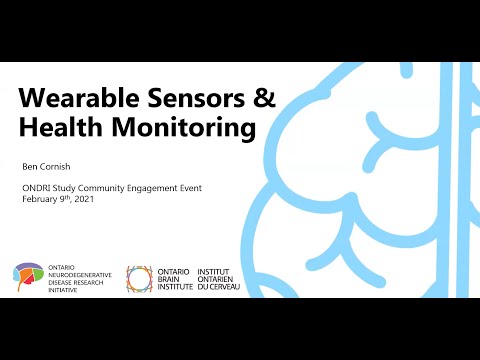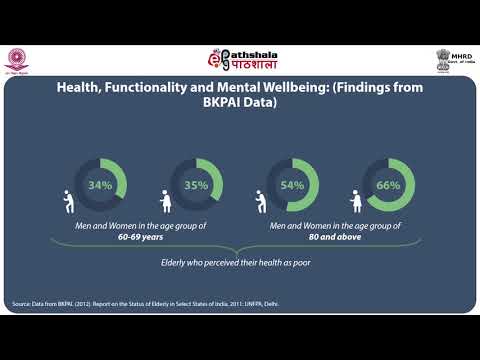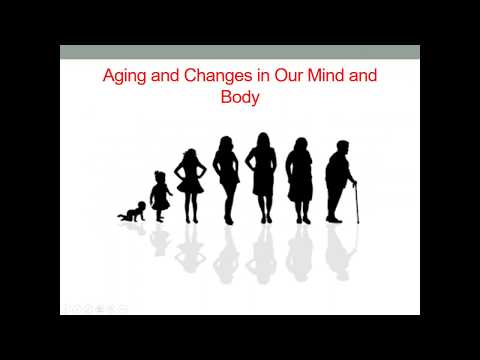Remote Health Monitoring of the Elderly through Wearable Sensors
Contents [show]
Learn about how to use wearable sensors to remotely monitor the health of the elderly.
Checkout this video:
Introduction: what is remote health monitoring and how can wearable sensors help?
Remote health monitoring (RHM) of the elderly is an important emerging area of healthcare. It has been shown to improve outcomes and reduce costs, while also providing a greater degree of independence for older adults. RHM involves the use of technology to monitor an individual’s health status and provide feedback to their care team in real-time.
Wearable sensors are one of the most promising technologies for RHM of the elderly. These devices can be used to monitor a variety of health metrics, including heart rate, respiration rate, and skin temperature. They can also provide information on an individual’s activity level and location. This information can be used to detect early signs of illness or deterioration, and to provide tailored intervention and support.
There are a number of challenges associated with implementing effective RHM programs for the elderly. These include issues related to sensor accuracy and reliability, data management and privacy, and user acceptability. However, with the right approach, these challenges can be overcome, and wearable sensors have the potential to transform the way we care for older adults.
The benefits of remote health monitoring for the elderly
There are many benefits of using wearable sensors for remote health monitoring of the elderly. By continuously monitoring vital signs and other health parameters, caregivers can proactively detect and manage potential health problems before they become serious. Additionally, remote health monitoring can help to reduce hospitalizations and emergency department visits, save healthcare costs, and improve care coordination.
Wearable sensors also have the potential to increase patient safety and independence by enabling patients to live in their own homes for longer periods of time. In addition, by providing real-time data on patients’ health status, wearable sensors can empower patients to take a more active role in managing their own health.
The challenges of remote health monitoring for the elderly
There are many challenges to remote health monitoring of the elderly. One challenge is that the elderly population is growing, and with that, the number of chronic diseases is also increasing. Another challenge is that the elderly are often isolated, which can make it difficult to monitor their health. Additionally, many elderly people live in remote areas, making it difficult for healthcare providers to reach them.
One way to overcome these challenges is to use wearable sensors. Wearable sensors can provide constant monitoring of vital signs and can be used to detect early signs of illness. Additionally, they can be used to provide reminders for taking medication or doing exercises.
There are a few challenges with using wearable sensors for remote health monitoring. One challenge is that the sensors must be comfortable to wear and must not interfere with daily activities. Another challenge is that the data collected by the sensors must be properly processed and analyzed in order to be useful. Additionally, it is important to ensure that the data collected by the sensors is secure and confidential.
The potential of wearable sensors in remote health monitoring
The use of wearable sensors for remote health monitoring is a promising area of research with the potential to improve the quality of life for elderly individuals. By continuously collecting data on vital signs and other health metrics, wearable sensors offer the opportunity to detect early signs of deterioration in health and provide timely interventions. In addition, wearable sensors can be used to monitor compliance with medication regimens and other treatments.
A number of different wearable sensor technologies are currently being developed and tested, including devices that measure heart rate, respiration, skin temperature, and blood pressure These devices are typically worn on the wrist or chest and transmit data wirelessly to a central hub. The hub can be located in the home or in a healthcare facility, and it is typically monitored by trained personnel who can take appropriate action if necessary.
While there are still many challenges to overcome, such as power consumption and accuracy, the potential of wearable sensors in remote health monitoring is great. With further development and refinement, these devices have the potential to greatly improve the quality of life for elderly individuals by providing early detection of health problems and timely interventions.
The limitations of wearable sensors in remote health monitoring
Wearable sensors have the potential to revolutionize the way we monitor our health, but there are still some limitations to their use. One of the main limitations is that they are not able to constantly monitor our health 24/7. They also rely on batteries, which can run out of power quickly if they are not charged regularly. Additionally, wearable sensors are not always accurate, and they may not be able to detect certain health conditions
The future of remote health monitoring for the elderly
Remote health monitoring of the elderly through wearable sensors is a growing area of interest for both researchers and healthcare providers. The use of wearable sensors allows for the continuous monitoring of an individual’s health status, making it possible to detect changes in health status early and intervene before a more serious health problem develops. There are numerous potential applications for remote health monitoring of the elderly, including the detection of falls, chronic disease management, and the promotion of healthy behaviors. While there are many challenges that need to be addressed before remote health monitoring of the elderly becomes a reality, such as data security and privacy concerns, the potential benefits make it an area worth exploring further.
The ethical considerations of remote health monitoring
Concerns about the potential for abuse and infringement of privacy are often raised when discussing the use of technology to monitor the health of remote patients, especially elderly patients While it is important to consider these potential risks, it is also important to note that technology can also be used to improve the quality of life for elderly patients and their caregivers.
When used correctly, wearable sensors can provide valuable information about a patient’s health that can be used to make informed decisions about their care. For example, data from a wearable sensor could be used to identify a decline in a patient’s physical activity level, which could be an early indicator of an underlying health condition. This information could then be used to prompt a conversation with the patient about their health and possible changes in their care plan.
In addition to providing useful information about a patient’s health, wearable sensors can also help to reduce the burden on caregivers by providing them with peace of mind that their loved ones are being monitored. For example, if a caregiver knows that their elderly parent is wearing a sensor that will alert them if they fall, they will worry less about their parent’s safety.
Overall, while there are some potential risks associated with the use of technology to monitor the health of remote patients, there are also many potential benefits that should be considered. When making decisions about the use of wearable sensors for remote health monitoring, it is important to weigh all of the potential risks and benefits in order to make the best decision for both the patient and the caregiver.
The privacy considerations of remote health monitoring
There are a number of companies that offer products and services for remotely monitoring the health of elderly patients. These products generally consist of wearable sensors that collect data about the patient’s vital signs, activity level, and location, which is then transmitted to a care provider. While this type of technology has the potential to improve the quality of care for elderly patients, it also raises privacy concerns.
One of the key concerns is that the data collected by the sensors could be used to make decisions about the patient’s care without their input or knowledge. For example, if a sensor detects that a patient has not moved for an extended period of time, the care provider may assume that the patient has fallen and take action accordingly. However, the sensor data may not be accurate enough to make this determination, and the patient may not actually be injured or in need of assistance.
Another concern is that the data collected by these sensors could be used to unfairly deny patients coverage or benefits. For example, if an insurance company were to gain access to sensor data showing that a patient has a heart condition, they could use this information to deny coverage or raise rates.
Finally, there is a risk that hackers could gain access to sensor data and use it to exploit elderly patients. For example, hackers could use data about a patient’s daily routine to determine when they are home alone and susceptible to burglary.
The potential benefits of remote health monitoring technology must be balanced against these privacy concerns. Patients should be made aware of these concerns before giving their consent to participate in such a program. In addition, safeguards should be put in place to ensure that data collected by sensors is used appropriately and responsibly.
The legal considerations of remote health monitoring
Although remote health monitoring of the elderly through wearable sensors has many potential benefits, there are also a number of legal considerations that must be taken into account.
For example, who will have access to the data collected by the sensors? Will the data be shared with the elderly person’s family or carers? If so, how will they be able to use it?
There are also privacy concerns to consider. How will the data collected by the sensors be used? Who will have access to it? Will it be used for research purposes?
Finally, there are also ethical considerations to take into account. For example, is it ethically permissible to monitor an elderly person’s health without their knowledge or consent?
All of these legal, privacy and ethical considerations must be taken into account when considering remote health monitoring of the elderly through wearable sensors.
Conclusion
In conclusion, the remote health monitoring of the elderly through wearable sensors is a promising technology that has the potential to improve the quality of life for seniors. While there are still some challenges to be addressed, such as data privacy and interoperability, the benefits of this technology make it worth further exploration.






